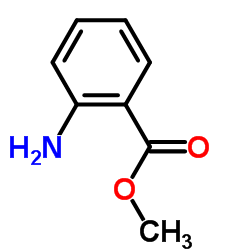Passive avoidance training results in increased responsiveness of voltage- and ligand-gated calcium channels in chick brain synaptoneurosomes.
E J Salinska, D Chaudhury, R C Bourne, S P Rose
文献索引:Neuroscience 93(4) , 1507-14, (1999)
全文:HTML全文
摘要
A temporal cascade of events has been described from a number of biochemical investigations of passive avoidance training in day-old chicks. Among these, within minutes of training, there is a transient, enhanced release of glutamate and increased agonist and antagonist binding to N-methyl-D-aspartate-sensitive glutamate receptors in the intermediate medial hyperstriatum ventrale of the forebrain. Some 6.5 h later, alpha-amino-3-hydroxy-5-methyl-4-isoxazo lepropionate binding to glutamate receptors is also increased in the same region. These processes might be predicted to affect the uptake of calcium via voltage-sensitive calcium channels or glutamate receptor-associated channels, thereby changing the intracellular calcium concentration. To test this possibility, we have measured the calcium concentration in synaptoneurosomes, containing both pre- and postsynaptic elements, prepared from left and right intermediate medial hyperstriatum ventrale at various times following training, using Fura 2-AM as the indicator of intracellular calcium concentration. Synaptoneurosomes, prepared immediately and 5 min after training, were stimulated with 70 mM potassium chloride in the presence of 2 mM calcium, resulting in a significantly enhanced increase in calcium concentration in synaptoneurosomes from the left hemisphere of trained chicks. This effect was absent in samples obtained at later times after training. N-Methyl-D-aspartate (0.5 mM) induced a significant enhancement in the increase in calcium concentration in intermediate medial hyperstriatum ventrale from both left and right hemispheres 10 min and 30 min after training. At 3 h and 6 h after training, alpha-amino-3-hydroxy-5-methyl-4-isoxazo lepropionate (0.5 mM) induced a significantly enhanced increase in calcium concentration in samples from either hemisphere. These results suggest that immediately after training there is an engagement of both pre- and postsynaptic voltage-sensitive calcium channels, followed by an increased reponse to N-methyl-D-aspartate receptor stimulation, and coinciding with the enhanced calcium-dependent glutamate release and an increase in N-methyl-D-aspartate-sensitive glutamate receptor binding that has been reported previously. The alpha-amino-3-hydroxy-5-methyl-4-isoxazolepropionate-sensitive mechanisms are activated at a later stage of memory formation, when increased alpha-amino-3-hydroxy-5-methyl-4-isoxazolepropionate binding to glutamate receptors has been reported. Thus, responsiveness of calcium channels to agonist stimulation is implicated in temporally diverse stages in the cascade of events involved in memory formation following passive avoidance training in the chick.
相关化合物
| 结构式 | 名称/CAS号 | 分子式 | 全部文献 |
|---|---|---|---|
 |
邻氨基苯甲酸甲酯
CAS:134-20-3 |
C8H9NO2 |
|
Palatability of bird repellents to Rattus norvegicus.
2001-07-01 [Pest Manag. Sci. 57(7) , 615-9, (2001)] |
|
Synthesis and antibacterial activity of novel 4-chloro-2-mer...
2013-02-01 [J. Enzyme Inhib. Med. Chem. 28(1) , 41-51, (2013)] |
|
High-performance liquid chromatographic determination of met...
2001-05-11 [J. Chromatogr. A. 917(1-2) , 95-103, (2001)] |
|
Comparison of methyl anthranilate and denatonium benzoate as...
2000-09-15 [Physiol. Behav. 70(5) , 521-5, (2000)] |
|
Reducing honey bee defensive responses and social wasp colon...
2009-07-01 [J. Med. Entomol. 46(4) , 782-8, (2009)] |